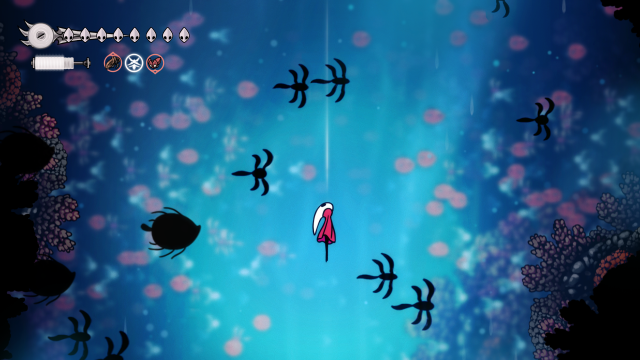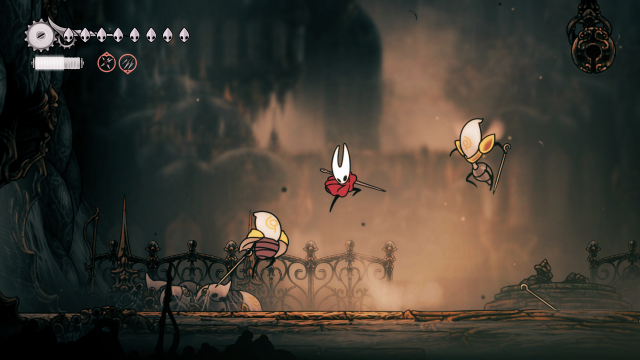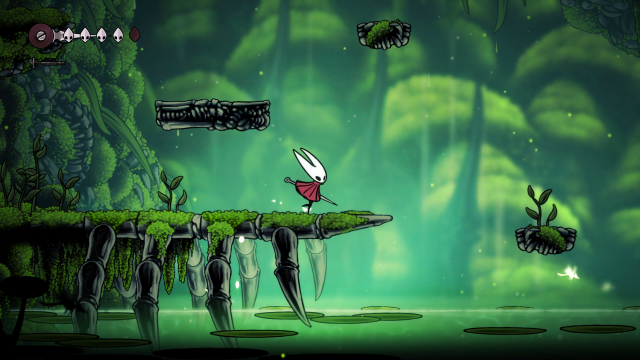Phenomenal boss fights with strong combat fundamentals; Beautiful world and story; Exceedingly generous package
Game’s scope can get in its own way at times; Will definitely be too hard for some players
Generations ago, the release of a video game sequel was a gift to the superfan. Super Mario Bros., Doom, and Street Fighter II were all runaway successes, and were all immediately followed by sequels that were more demanding, more intimidating, and built on the assumption that the player was arriving at the title screen with a whole game’s worth of genre experience already under their belt. Super Mario Bros. was a challenge fit for everybody, but Super Mario Bros. 2 (aka The Lost Levels) was a challenge fit only for those who had bested Bowser.
In the years since, it has been increasingly common for developers and publishers to burden every entry in a series with the responsibility to onboard a new crop of beginners. There’s no such thing as a game for beginners anymore, or rather every game is a game for beginners, and instead there is no such thing as a game for experts. It’s akin to expecting every new collection of poetry to start with a foreword explaining how meter and metaphor work, and then deliberately limiting 90% of the included poems to be accessible to the kind of reader who would have been lost without that foreword.
Hollow Knight: Silksong is a game that expects the player to already know how to read at a college level, so to speak. Some have quipped that it has a lengthy tutorial, one that came out in 2017: Hollow Knight. But it’s more accurate to say that Hollow Knight is a prerequisite rather than a tutorial. It’s a foundation for Silksong to build upon, but Silksong is its own thing with its own demands to make of the player, above and beyond the original.
If you haven’t played Hollow Knight, you should really start there before considering Silksong, and you therefore shouldn’t need a review to explain that Hollow Knight was a Metroidvania with two major strengths relative to its peers. First, it took influence from Fromsoft’s games but more subtly than most, avoiding rote copying of things like the stamina system and RPG stat points, and instead paying attention to things like the uncertainty that comes with the occasional mechanical betrayal, or the narrative importance of getting lost. Second, it had very solid combat with a large roster of often excellent bosses. Great control, great telegraphs, high challenge – if you had asked me a month ago for a list of the best boss fights in Metroidvania games, I would have started by rattling off several of Hollow Knight’s best, like Mantis Lords and Pure Vessel.
Silksong builds on Hollow Knight in two major ways. First, critically, is an increase in scope. Silksong’s Pharloom feels much larger than Hollow Knight’s Hallownest, even though new protagonist Hornet jets around the map much faster than the first game’s titular hero. The world has even been padded out with somewhat ill-advised MMO-style quest boards. Second, and most critically, Hornet controls very differently than the knight did.
In Hollow Knight, while the knight had various movement abilities like a double jump and an evasive dodge, they were by default relatively slow and somewhat tanky. Finding time to heal could be difficult, but the knight could take several hits in a row without much worry, and the knight didn’t have much difficulty regaining their healing resources. Hornet, on the other hand, is a glass cannon. She starts the game with five units of energy (“masks”), and many of the game’s threats deal two masks of damage at a time. Even in early boss fights, just three hits in short order and the player is toast. It is easier for Hornet to heal (she can even do it while hovering in midair), but the real trick, the crux of both every successful attempt and every embarrassing failure, is the dash.
Unlocked very early in the game, the dash massively increases Hornet’s ability to rush in to punish the enemy, or to flee to safety. On the other hand, because Hornet’s melee attack range isn’t particularly generous, and because Hornet takes contact damage from the enemy, it is very easy to overshoot and get clipped when going on the offensive. Many enemy types are deliberately evasive, requiring Hornet to be both fast and decisive to run them down. Can you avoid dashing in these fights? In some cases, sure, but because of enemy movement patterns you’ll be missing out on a ton of opportunities to damage the enemy. The game is constantly incentivising the player to make small dash adjustments all over the place, making moment to moment gameplay in its fights uncommonly exhilarating. Even better, there’s no dodge roll.
Unlike many recent 2D action platformers, Silksong does not give you a “get out of jail free/ignore the mechanics” dodge or parry button, and expects you to avoid damage by thinking in advance about where Hornet should be and then moving Hornet there. The interplay between the boss trajectory, projectiles, potential boss followup attacks, various minions, and stage hazards all combine to make calculating the best course of action dynamic and satisfying. Like in classic arcade games, the player’s sense of their best course of action is constantly shifting. Indeed, even screens of regular enemies can be touch & go situations in this game, and the player has to remain vigilant.
The game layers in additional abilities (Tools and Silk Skills) that increase Hornet’s ability to do heavy damage without putting herself in as much risk, but learning how best to deploy these without tripping over your thumbs in a tense bossfight is also something of a challenge. And there are other boons you’ll find as you play, like an accessory that randomly blocks damage, or upgrades to your maximum health, or whole new alternative movesets that you can swap to. But Silksong never lets the player get so strong as to outstrip the game’s challenge – you’ll be fighting to keep pace.
People play games for all sorts of reasons, and Silksong is definitely a game for those who crave challenge. For that type of player, it’s pretty remarkable, but for the player less adept at 2D action games, who maybe just thinks the bugs in this game are cute, or who is curious about the various castes in this strange society of bugs, or who feels an unexamined urge to keep up with whatever games other people are playing, or who are perhaps genre tourists who just kinda likes coasting on vibes and variety, Silksong could be a bad time.
It’s honestly strange that this game is the way it is. Team Cherry charged $20 when they could have charged $40 without much complaint. They could have made a more accessible game in pursuit of even greater sales, rather than a divisive and demanding crucible for dedicated action game sickos. They wouldn’t even have had to sell out to cash in, but simply make a normal sequel. AAAs and indies alike frequently compromise their vision for various reasons like maximizing microtransactions, chasing trends, or pandering to the audience. Instead, Team Cherry built this uncompromising monster.
If you do like tough 2D action platfomer boss fights, Silksong is an absolute no-brainer so long as you have any tolerance for the Metroidvania genre at all. It’s the Metroidvania side, rather than the combat side, that I think drags this game down a bit from Generational Masterpiece territory to just Really Good Game territory. This was true of Hollow Knight too – there’s some unresolved tension between the design of an action game and that of a Metroidvania.
For much of Silksong’s length, so long as there’s fresh terrain to explore and fresh bosses and arena challenges to fight, that tension is dormant. The only thing that seems out of place is the strangely rote and unengaging noticeboard quests that ask you to do things like kill 25 bird enemies to collect their feathers. However, eventually the more obvious exploration breadcrumbs thin out and the player has to put in more work for less satisfaction. Metroidvanias — really any collection or exploration-focused genre — unavoidably start offering more limited returns the closer the player gets to 100% map completion. Some Metroidvanias minimize this problem with a smaller scope, or with more aggressive automapping tools, or by giving the player no good reason not to wrap it up and roll credits… not that any of those approaches are themselves perfect. But Silksong, like Hollow Knight, keeps incentivising the player to put up with unrewarding stretches of backtracking and wandering by dangling the carrot of best-in-class boss fights in front of them.
Even after dozens of hours, I’m not sure I found all the game’s bosses. The game’s boss fights are invigorating throughout, but the exploration is less consistent. The traversal, the mapping, inching forward and finding new benches and new characters and so forth, that was all great. But the sense that there’s something somewhere in Pharloom that you need to find? That’s enervating. While it is possible to square this circle by just looking up maps online, that does feel like a bandaid on top of the design. Subjectively this felt to me like a bigger problem in Silksong than in Hollow Knight, but it’s possible that the lows in Silksong simply feel lower because the highs are higher.
And truly, the highs are higher. While I won’t spoil specifics for such a new title, Silksong racks up one great boss fight after another. Lest you think I’m just a boss junkie, yes, Silksong’s atmosphere, enemy layouts, enemy AI, platforming, storytelling, audio, art, worldbuilding, and sense of humor are all great too. Even if I do think the scope of structure get in the way of its action game virtues from time to time, it’s still one of the best 2D games this decade.




 ShareThis
ShareThis










